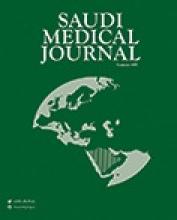SYSTEMATIC REVIEW
The association between the CC chemokine ligand 5 -28C>G gene polymorphism and tuberculosis susceptibility
This review by Lu et al assess the association chemotactic chemokine (C-C motif) ligand 5 (CCL5) -28C>G polymorphism and TB risk. PubMed, Web of Science, and WanFang were searched by the authors for eligible studies on CCL5 -28C>G polymorphism. Before assessing the effects of CCL5 polymorphisms on the susceptibility to TB, they tested whether genotype frequencies of controls were in Hardy Weinberg Equilibrium (HWE) by using x2 test. They also quantified the effect of heterogeneity by I2 test. They conclude that CCL5 gene -28C>G polymorphism might be a protective factor for the development of TB.
see page 1400
ORIGINAL ARTICLES
Recognition of oxidized albumin and thyroid antigens by psoriasis autoantibodies. A possible role of reactive-oxygen-species induced epitopes in chronic plaque psoriasis
Psoriasis is a chronic skin disorder, where thyroid abnormalities are reported. This study investigates the role of reactive-oxygen-species (ROS) induced epitopes in psoriasis autoimmunity. Anti-ROS-epitopes-albumin-antibodies show cross-reactions with thyroid antigen, thyroglobulin and with their oxidized forms. Data show high degree of specific binding by psoriasis-antibodies to ROS-epitopes-albumin, ROS-thyroid antigen and ROS-thyroglobulin. Moreover, sera from psoriasis patients show higher levels of carbonyl-contents. This study shows an association between ROS-induced-epitopes and psoriasis autoimmunity. Our novel data conclude that structural alterations in albumin, thyroid antigens by ROS, generate unique neo-epitopes that might be one of the factors for induction of autoantibodies in psoriasis.
A photograph showing the A) Histopathology of thyroid tissue. Hematoxylin and eosin staining of thyroid tissue dissected from rabbit (400X). B) Preparation of thyroglobulin. Gel exclusion chromatography of rabbit thyroid extract on Sephacryl S200 HR column. Indicated fractions in circle were collected and were used as thyroglobulin. SCE - simple cuboidal epithelium, CECs - cuboidal epithelium cells
see page 1408
Treatment of ventilator-associated pneumonia and ventilator-associated tracheobronchitis in the intensive care unit. A national survey of clinicians and pharmacists in Saudi Arabia
Most of the respondents in the survey of Al-Omari et al preferred to use colistin-based combination therapy and intravenous antibiotics to treat ventilator-associated pneumonia (VAP) and tracheobronchitis (VAT) caused by extensively drug-resistant (XDR) Acinetobacter baumannii (AB). However, colistin dose and duration varied among the healthcare providers. A significant percentage of intensive care unit (ICU) fellows (41.3%) and clinical pharmacists (35%) opted for 2 million units (mu) of colistin every 8 hours without a loading dose, whereas 60% of infectious disease consultants, 45.8% of ICU consultants, and 44.4% of infectious disease fellows preferred a 9 mu loading dose followed by 9 mu daily in divided doses. The responses for the scenarios were different among healthcare providers (p<0.0001).
Characteristics of survey participants based on the completed survey (N=183)
see page 1453
CASE REPORT
Torsion of a wandering spleen. A rare cause of acute abdomen
Jude & Onochie report a case of torsion of wandering spleen in a 28-year-old male presenting with an acute abdomen, which was treated by splenectomy. On physical examination, the patient was acutely ill-looking, in pain distress, febrile, dehydrated, pale, anicteric with neither pedal edema nor peripheral lymph node enlargement. Blood pressure was 120/70 mm Hg, pulse rate was 124/min, and respiratory rate was 40 cycles/min. The abdomen was distended with multiple scarification marks as a traditional treatment for enlarged spleen.
Distended abdomen with multiple scarifications
see page 1490
- Copyright: © Saudi Medical Journal
This is an open-access article distributed under the terms of the Creative Commons Attribution-Noncommercial-Share Alike 3.0 Unported, which permits unrestricted use, distribution, and reproduction in any medium, provided the original work is properly cited.








